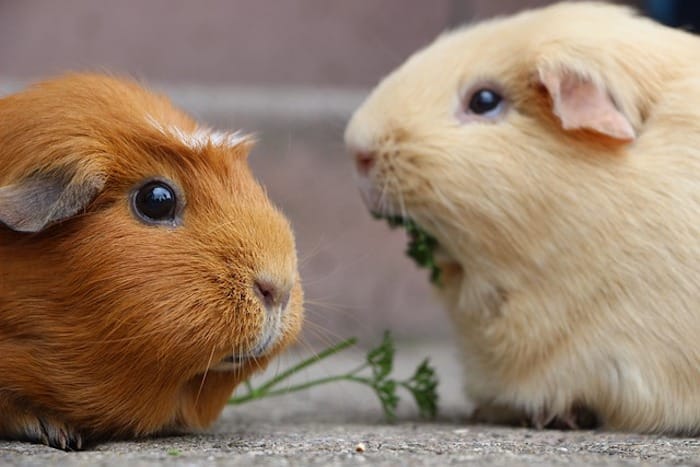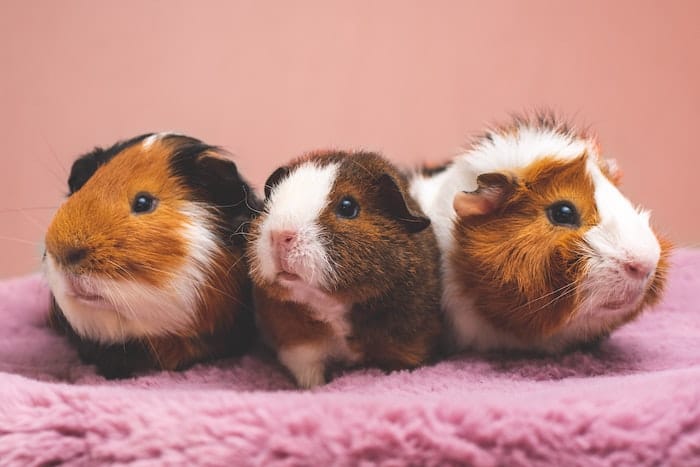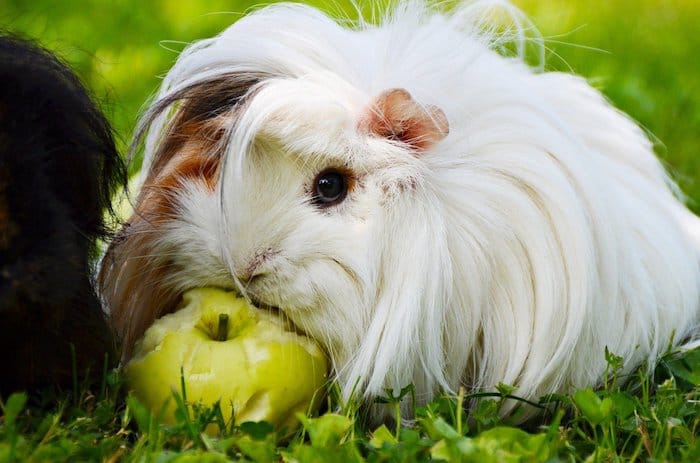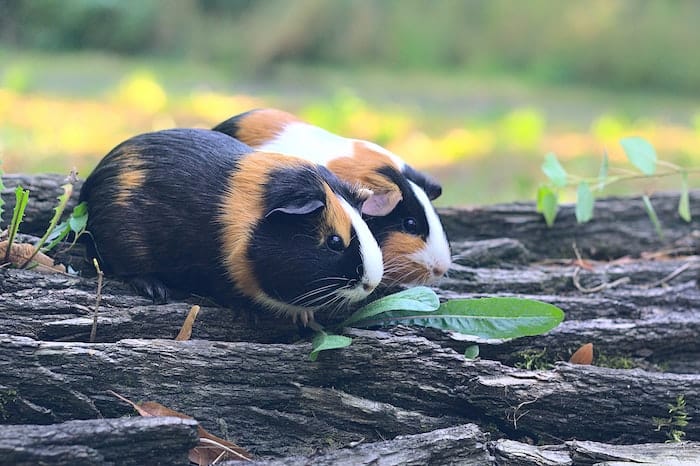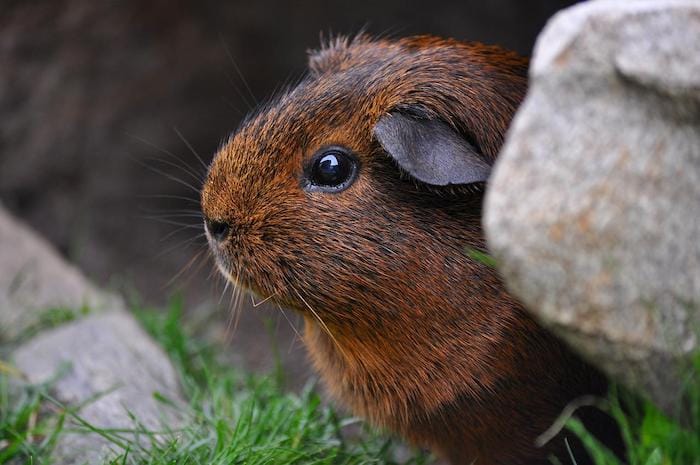Did you know that there are no guinea pigs in the wild? Guinea pigs have been domesticated for thousands of years. Originally from South America, Cavies, as they are fondly called, are tender and friendly creatures that have provided love, companionship, and entertainment to their pet owners.
Guinea pigs are rodents that live an average of five to eight years, weighing about 1.5 to 2.5 lbs. and have a compact round body with a length of about eight to ten inches. They are crepuscular, meaning they are more active at dusk and dawn, herbivores, and low maintenance.
Caring for cavies is pretty straightforward, but before deciding on getting one, do your research because critical things such as their diet, habitat, and handling should be considered so they’ll live a long healthy life.
To help you out, here’s an ultimate guide to caring for a guinea pig:
Decide On The Breed
There are about 13 different breeds of cavies, each is unique in its own way. Get to know them:
- American guinea pig – Has a short, smooth coat, much easier to maintain than long-haired ones
- Baldwin guinea pig – Completely hairless creature that prefers to live indoors and cannot be exposed to direct sunlight
- Alpaca guinea pig – Cavies that have wavy and coarse fur that needs a lot of maintenance
- Abyssinian guinea pig – A cute cavy that has a messy hairdo, considered to be the most affectionate of all breeds
- Coronet guinea pig – A playful, sweet ball of fur with a flowing, voluminous coat that needs everyday brushing.
- Lunkarya guinea pig – A cavy most known as the ‘lunk’ looks more like a long-haired rabbit than a guinea pig. It has thick, long rough curls that don’t do well with extreme heat.
- Merino guinea pig – A breed of cavy with a thick coat, considered the most intelligent and affectionate of the bunch.
- Peruvian guinea pig – The prettiest of all breeds, with smooth straight fur that can grow as long as two feet
- Skinny guinea pig – Another hairless breed that needs no grooming
- Silkie guinea pig – The most gentle of all breeds and has a long mane that grows backward
- Sheba guinea pig – Funnily called the ‘bad hair day’ cavy, has a dense coat that grows all over.
- Rex guinea pig – cavies with floppy ears, curly whiskers, and short wool-like fur
Now that you know the different breeds, you may decide what you’d like to care for, the ones with short coats but low maintenance care or the pretty long-haired ones that require high maintenance.
The Right Home For Your Little Friend
Cavies are social creatures, and they would live better with a companion. Just make sure that when you put two together, they’re of the same gender, or if not, both are neutered and spayed as they could reproduce fast. A cage for one cavy should be at least 7.5 square feet while at least 10 square feet if you plan on putting two of them in one enclosure.
Their pen should be wired and enclosed with a tray at the bottom to catch drippings. Make sure their cage has a protective flooring as their soles could be very sensitive. The cage should be placed away from direct sunlight and excessive noise as they don’t respond well to those.
They need thick bedding made of paper, a hide box for privacy if they feel stressed, a water bottle clamped to the side of the cage, and a food bowl.
Feeding Your Cavies
Guinea pigs are not very picky eaters, but you should know the proper foods a guinea pig can eat so they’ll stay healthy. They need timothy hay at all times as this helps manage the growth of their teeth. Their diet should be rich in Vitamin C, which they could get from pellets or fruits and vegetables in moderation.
Vitamin C is a water-soluble vitamin that cannot be stored by humans, even cavies in their bodies. For guinea pigs, their recommended daily Vitamin C requirement is at least 30-50 mg, if not followed, your furry friend might be at risk for scurvy.
Cavies don’t typically overeat, so remember to only give them at least 1/8 cup of pellets and a cup of veggies like lettuce, kale, carrots, cilantro, parsley, and tomato. Fruits can only be given as a treat occasionally as they could be very high in sugar. Never give your cavies anything with chocolate, caffeine, and alcohol, as these could damage their digestive tract.
Cavies should be fed at a consistent schedule. It’s important to discard any uneaten leftover pellet food after one hour and leftover fruits and veggies after 24 hours. It’s also crucial to remember not to mix old and new food so they don’t get sick.
Guinea pigs are susceptible to heatstroke, so it’s a must to always check their water supply. They typically drink about five ounces of water in a day, so it’s vital to check this, especially during the summer season.
Handling Your Furry Pet
Guinea pigs are naturally wary of people but could get quickly accustomed to their handler given enough gentle coaxing. They have a strong flight response and would retreat and hide if they feel threatened and distressed.
Not all breeds want to be held and cuddled for extended periods, so you need to limit your handling of these creatures and opt for less invasive handling from time to time.
Cavies rarely bite, but they can, and they will if you mishandle them. They should be held with both hands and gently supported under the trunk. It is better to have them close to your body as they love being held close and prevent them from falling to the floor, which could lead to injuries.
Cavies may need a bit of time to get accustomed to their owner, but once they feel comfortable and safe, they’ll try to catch your attention for some cuddle time. That’s why it’s important to gradually build your relationship with your cavy so they’ll feel encouraged to be held and not be skittish around you.
When your pet just arrived in your home, remember to follow these tips for handling them:
- Don’t take them out of their cage right away. They need to get adjusted to their new surroundings first, so leave them there for about two to three days.
- Talk to your cavy through the cage. Let the cavy get accustomed to your voice and scent. When he starts to see you as a positive element and not a threat, he’ll start to trust and interact with you.
- When you feel that he’s ready to be petted, let him come over to you and gently pick him up making sure that there’s no pressure on his legs. Let him close to your chest so he’ll feel secure.
- Stay seated while petting. To prevent any accidents, it would be better to pet your cavy while seated on the floor. Since this is your first time together, unusual sounds and movements could startle you both.
Managing Their Health
Cavies don’t need veterinary care too much; you only need to bring them to a vet for a routine check-up once a year or if you notice something unusual with their behavior and appearance, like if they’ve fallen ill.
To have a healthy cavy, make sure you do the following:
- Brush their fur every week
- Trim their nails every few weeks
- Bathe them every three months
- Clean their cage weekly
- Give fresh, unchlorinated water daily
- Provide hay, vegetables, and pellets daily
Guinea Pig Training
Did you know that like dogs, guinea pigs can be trained to perform simple tricks? Though it might not be the easiest thing to accomplish, if you have patience and dedication, you might just be able to have your cavy roll around or give you a high five.
The conditioning technique with a treat reward also works with your guinea pig. You just have to do it repeatedly for them to catch the drift. The first thing you’ll need to hurdle is for your cavy to recognize your voice and his name when you call him. It’s also important to understand them when they get things wrong and don’t get mad or raise your voice as they could get agitated very easily.
Guinea Pig Behavior
Cavies make small unusual sounds like a whistle or a grunt when they’re excited, and they even squeak merrily when they’re happy, especially when they see their favorite people around. Experts call it vocalization.
Funnily, guinea pigs have a stunt many call ‘popcorning’ It’s when they run, jump in the air and gracefully land on all fours. They will do this repeatedly when they are happy and excited, which is a delight and something that will tug at your heart and endear the little creature more to you
Don’t get surprised if one day you’ll see your cavy frozen in a spot. This is a natural behavior they do when they feel threatened. Their primary goal in doing this is to become invisible. And when there are other cavies around, they will follow suit and get frozen too.
Guinea pigs sleep with their eyes wide open. But when they are extremely comfortable and relaxed, they could get tempted and close their eyes. So, if you think they are in deep thought, they might be sleeping.
Conclusion
Guinea pigs are one of the cuddliest and lovable pets one could have at home. They are typically low maintenance, save for some breeds with long mane. Their love for social interaction and the constant need for short attention make them adorable companions.
The way they communicate is one of their endearing behaviors. And you definitely will have the best time witnessing their funny antics and their jumps and twirls in the air when they’re happy.

